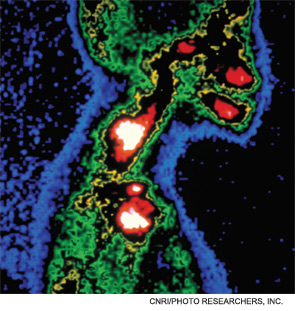
Explore This Issue
February 2011SCOTTSDALE—Patients who had residual neck disease after treatment for a primary head and neck squamous carcinoma and then underwent neck dissection had comparable survival rates to those who had their disease resolved after their initial chemotherapy and radiation treatment, according to a retrospective analysis from researchers at the University of Louisville in Kentucky presented here Jan. 27.
The study, presented at the Triological Society’s Combined Sections Meeting, provides evidence that neck dissection plays an important role when dealing with residual disease in patients who have been treated for head and neck malignancies.
“In the age of chemotherapy and irradiation for definitive head and neck squamous cell carcinoma, the most effective treatment of the neck has not been well characterized,” said Laura Dooley, MD, a third-year resident in Louisville’s surgery department, who worked with Keven Potts, MD, and Jeffrey Bumpous, MD, both of Louisville’s department of surgery. “The literature describes variances in treatment of residual neck disease that range from mandatory neck dissection to the selective use of neck dissection based on imaging studies after treatment such as PET or CT scans.”
Findings
The study involved 230 patients treated for head and neck squamous cell carcinoma at the James Graham Brown Cancer Center in Louisville, Ky. between 2005 and 2009.
Fifty-eight percent, 133 patients, were complete responders, in that they had no evidence of residual disease after their initial treatment. Another 23 patients, or 10 percent, still had residual primary site disease and needed more treatment. The remaining 74, the patients on whom the study focused, had residual neck disease after treatment.
Researchers set out to learn how many of those patients still had malignancies, and how those who needed dissection fared compared to the others.
“It is the practice at our institution to perform neck dissections on those patients who do not achieve a complete response in the neck,” Dr. Dooley said. “It was the goal of this study to see how many of the patients who underwent neck dissection for residual neck findings after therapy actually had a positive pathology report. Were these masses residual malignancy, or were they simply fibrosis?”
Patients who had started treatment for malignancies but hadn’t completed treatment, along with those without adequate follow-up, were excluded from the study.
Those who were found to have residual neck disease after their initial treatment had a PET scan or a CT with contrast within 12 weeks. In 35 of the patients, roughly half of those studied, the disease had resolved by that time. The other 39 still had residually positive neck disease and underwent neck dissections at four months.
Afterward, 19 patients, or 49 percent, had a positive pathology for malignancy. The other 20 had negative reports. “This was consistent with what was seen in the literature, of 40 to 46 percent,” Dr. Dooley said.
Researchers analyzed the initial N stage of the malignancies to see whether there was any statistically significant link between N-stage level and a positive pathology report after dissection.
—Laura Dooley, MD
“The answer was no,” Dr. Dooley said. “We found that early N-stage patients were equally as likely to have positive pathology at neck dissection as those with more advanced N stage.”
N-stage 1 patients with positive pathology reports, a total of three out of the six, were comparable to the number of N-stage 3 patients with positive pathology, 5 out of 11.
Researchers also looked at the primary tumor site data to see whether that could be a significant predictor of a positive pathology after dissection. There was no link, except in the case of the oral cavity. But Dr. Dooley cautioned, “The oral cavity had the fewest number of patients overall and had very few patients (n=2) with residual neck disease…. We interpret this with some trepidation because of the small sample size.”
In terms of overall survival, those with progressive disease fared the worst, as expected. But the other groups—those who had a complete response right away, those who had a complete response after a delay and those who underwent a dissection for residual disease—all fared similarly, with five-year survival rates of 66 percent to 71 percent.
That trend held when survival was based on N stage: The stage was an important predictor regardless of the group the patient was in.
The HPV Factor
Because there has been a lot of discussion recently about the role of HPV in tonsil malignancies, researchers took a closer look at malignancies with the tonsil as the primary sub-site.
“Patients requiring neck dissection for residual palpable disease had survival greater than all other outcome groups,” Dr. Dooley said. “Interestingly, those patients with the worst survival were those who achieved a complete response immediately after treatment completion.”
At the time of the procedures, the James Graham Brown Center did not routinely assess tumors for HPV virus, but Dr. Dooley said that will be an area of continued work.
Management
Overall, though, the study is a sign that neck dissection plays a key role in resolving residual neck disease, Dr. Dooley said. “Neck dissection remains important in the management of advanced head and neck malignancy treated primarily with chemo and radiation therapy,” she said. “This may be especially true in patients with tonsil primaries, though this area needs further evaluation and analysis that takes into account HPV and P16 (a protein that is a marker of HPV) status.”
David Eibling, MD, professor and chair of otolaryngology at the University of Pittsburgh and moderator of the session, said he was “intrigued” by the study. He asked Dr. Dooley whether there was any correlation between the pathology findings of patients evaluated with a CT scan or a PET scan.
Half of those with residual disease by CT scan or PET scan had a positive pathology report, Dr. Dooley explained. There were very few patients with PET scans so PET specificity and sensitivity were not evaluated, she added.
Leave a Reply